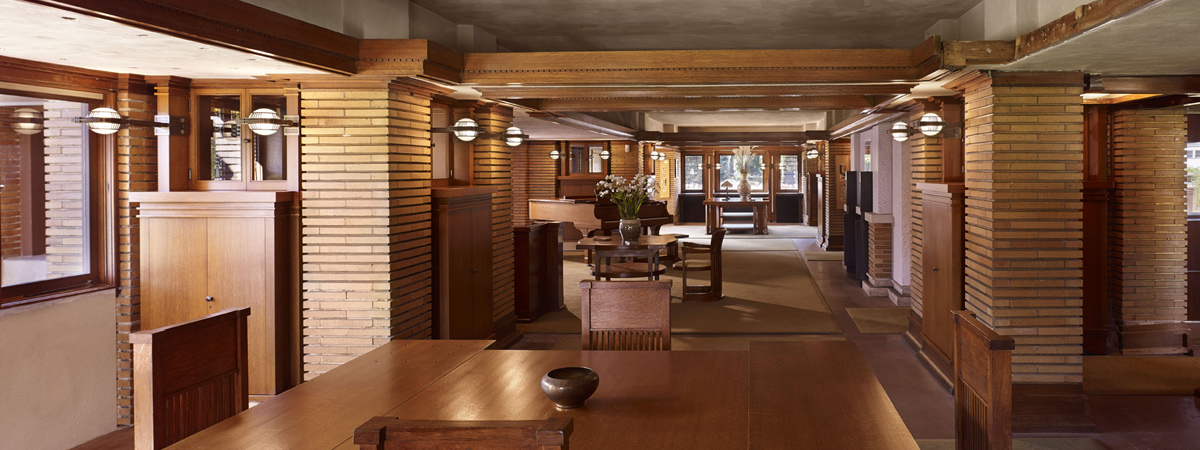Can Different Ceiling Heights Influence the Way You Think?
Have you ever walked into a space and just felt so claustrophobic? Like you can barely catch your breath and you can’t wait to get out!
...that my friends, is probably the result of a low ceiling height (and probably tightly spaced walls).
Research has shown that when a person is in a space with a 10-foot ceiling, they are likely to have more free and abstract thoughts. When a person is in a room with an 8-foot ceiling, they are more likely to have their focus on specific objects. Our thoughts are more controlled in a space with a lower ceiling height, where objects can become central and there is less space for the body and mind to wander through. This causes people to engage in either more free-form, abstract thinking or more detail-specific thought. The consequences of the ceiling height could be positive or negative - it just depends on what the task at hand is. It is very important to define the program of each space when determining ceiling heights. This is very crucial when designing all kinds of spaces, but most importantly in classrooms and workspaces. The ceiling height impacts how students/employees think and what they think about.
“A recent study at the University of Minnesota suggests that ceiling height affects problem-solving skills and behavior by priming concepts that encourage certain kinds of brain processing.”
Take a moment to think about religious buildings and how they have adjusted their ceiling heights to promote different thoughts. In cathedrals, you find grand ceilings, but in chapels, you will most likely find low ceilings.
“The way people think and act is affected by ceiling height.”
Design/ Application
“One of the most exciting parts of being a designer is knowing that the spaces we create can have a positive impact on the lives of the people who occupy them. We aren’t always aware of the factors built into the world around us that affect our mood or even our creativity but that doesn’t mean we aren’t strongly influenced by them. ”
There is no answer to a perfect universal ceiling height. It depends on the use of the building and what you are trying to accomplish. If you are designing a retail space, it is very easy to manipulate consumers through the ceiling height. It is very unlikely for you to walk into a retail store and find grand ceilings. The retailers want you to stay focused on their products only. If you are designing a space for an artist/designer, you would want to have a balanced ceiling height - to promote creative thinking, but also for them to stay focused on their work.
A new way to make lower ceilings higher is to expose the ceiling. This has become a popular design feature that many people are favoring. Not only does it make the space less confined, but also exposes the building for what it is.
Higher ceilings are more inviting, so if you are designing an entrance to a space, it would be beneficial to add a few feet of height to it in comparison to the rest of the house. Kitchens are a place to be creative, so 10 foot ceilings are promoted and found to be more pleasant. If you're designing a yoga studio, you should lean towards an 8 foot ceiling height to promote focus and concentration.
Don't forget to keep in mind how temperature and acoustics are affected by ceiling heights. Before air conditioning existed, buildings were designed with higher ceilings, with high windows, to allow natural air to travel through the space and cool the lower inhabited area.
The shape (curved, diagonal, flat, tapered, etc.) and material of the ceiling also play a big role in the experience of the space, but there will be a whole other article coming soon on that.
Case Study
Frank Lloyd Wright was a master at manipulating space with ceiling heights.
Let's take a look at the Darwin Martin House in Buffalo, NY. The main house was built between 1904 and 1905 and at around 15,000 square feet on three levels. This house is HUGE. By breaking up the house into rooms with different ceiling heights, layered roofs, and very few large flat walls, Wright’s design makes it feel much more intimate than that.
Take a look at the photos below and imagine yourself in each of these spaces.






Just by looking at these spaces, I bet you can already feel a difference from one space to the other. Imagine actually being there and experiencing the different spaces.
There are so many elements in design that affect the whole body. Ceiling heights are not only experienced with the eyes but also affect the way the space feels, the way sound travels and the way it smells. When you are designing a space, keep these things in mind to promote powerful experiences for the user. Architecture has the ability to change lives, regardless of what anyone tells you.



